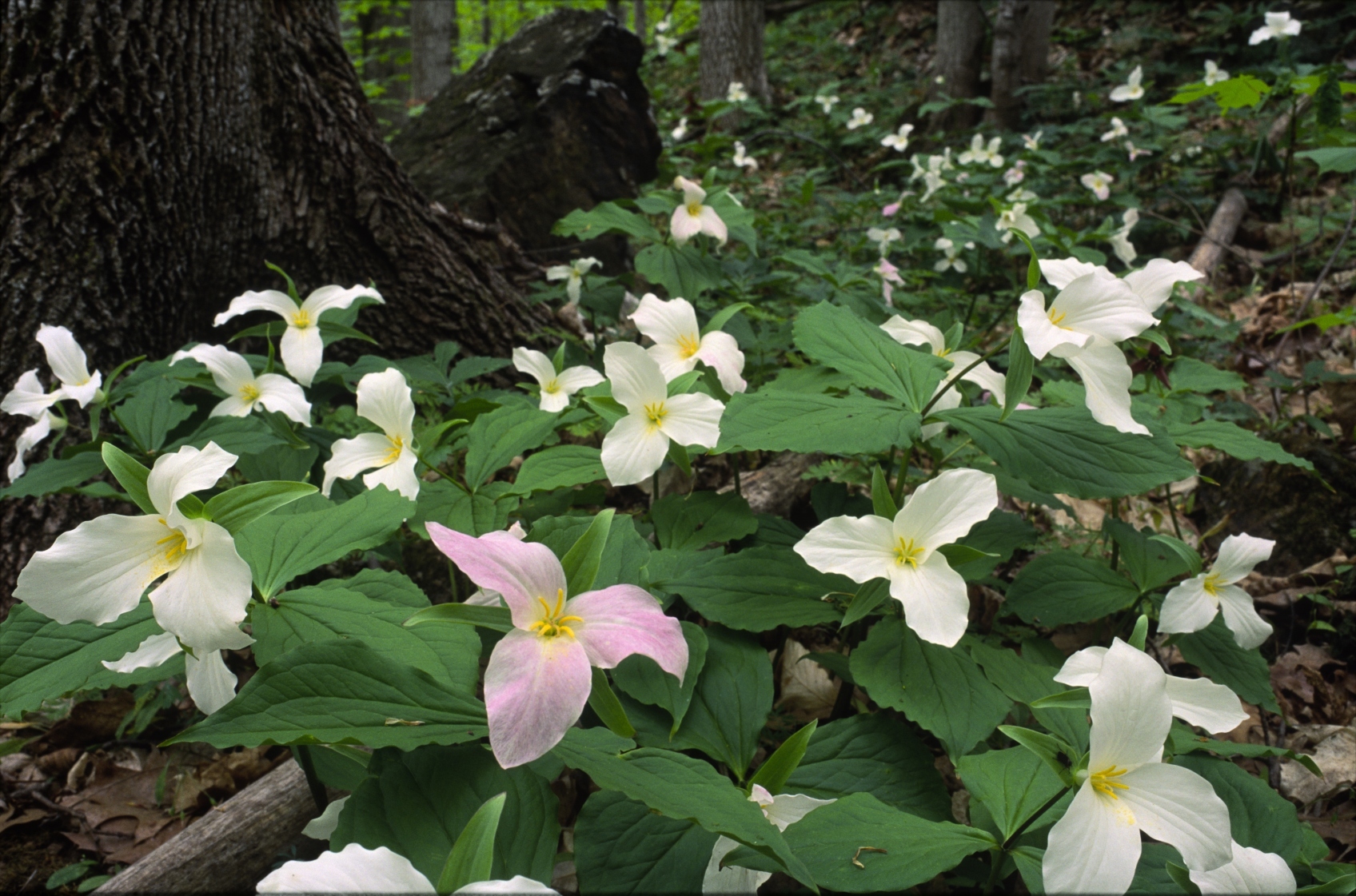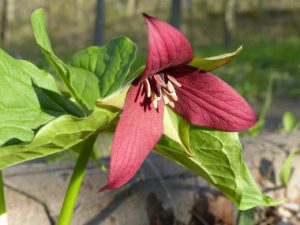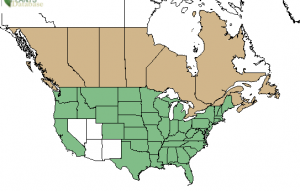
Trilliums can be a bright spot in a drab spring

Arlene Tryon 1963
Every May Day — the first of May — we kids would hang a May Basket on our teacher Arlene Tryon and disappear off the school grounds. It was a tradition in the rural, one-room school: Half a hundred kids just took off at noon time in all directions. No police were called (the schools didn’t have phones anyways… or running water) no parent was upset, no one got lost or was kidnapped. Some of us boys even managed to walk a couple of miles and climb to the top of Bradbury Mountain State Park (without paying an entrance fee.)
 We had to cross a gully to hike to the state park and there grew Trilliums and Skunk Cabbage (see separate entry.) Trilliums were kind to the nose so I was not surprised then to learn people ate them. But the annual trek to the top of Bradbury fixed the date in my mind of the plant being at the right stage in southern Maine: May first.
We had to cross a gully to hike to the state park and there grew Trilliums and Skunk Cabbage (see separate entry.) Trilliums were kind to the nose so I was not surprised then to learn people ate them. But the annual trek to the top of Bradbury fixed the date in my mind of the plant being at the right stage in southern Maine: May first.
The young unfolding Trilliums before flowering are edible and were called by Mainers “much hunger.” They are a salad and pot herb tasting like raw sunflowers seeds. After they flower the edible parts are bitter. Not all Trilliums are edible. Among the comestible species are T. erectum, T. sessile and T. grandiflorum.
Green Deane’s “Itemized” Plant Profile
 IDENTIFICATION: Trillium don’t produce true leaves or stems. The stem is an extension of the rhizome. It produces tiny scale-like leaves. It has a single terminal blossom and leaves of three in a whorl.
IDENTIFICATION: Trillium don’t produce true leaves or stems. The stem is an extension of the rhizome. It produces tiny scale-like leaves. It has a single terminal blossom and leaves of three in a whorl.
TIME OF YEAR: Spring, early in southern areas, later in northern areas.
ENVIRONMENT: Wet areas, gullies, by streams, moist woods
METHOD OF PREPARATION: These plants are often protected. Make sure of your local laws. That said young leaves before the plant blossoms can be eaten raw or cooked. The berries and rhizome are not edible.

